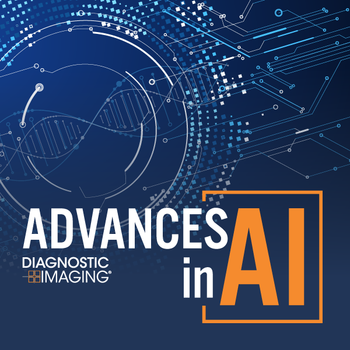
Fruits explode, vegetables flit as MRI dynamizes still life
What set MRI on the path to where it is today was this modality’s ability to reveal, in strikingly realistic fashion, the mushy insides of our bodies. Whereas x-rays and CT scans showed our bony interior in stark relief, MRI excelled at showing our softer selves. That may be why it seemed so natural and fitting when fruits were used to see whether MRI scanners were working correctly. But I had never seen such scans as art, not until Andy Ellison got hold of them.
What set MRI on the path to where it is today was this modality’s ability to reveal, in strikingly realistic fashion, the mushy insides of our bodies. Whereas x-rays and CT scans showed our bony interior in stark relief, MRI excelled at showing our softer selves. The bulbs and soft curves of the brain were there, intact, untouched, unsettlingly visible. It was otherworldly, like turning a microscope on the human body, as MRI provided a view that hadn’t been available anywhere but at autopsy. And even then, the real couldn’t hold a candle to the virtual. It was all perfectly shaped and in context, unscathed.
That may be why it seemed so natural and fitting when fruits were used to see whether MRI scanners were working correctly. Walking past the assembly lines and testing bays at MRI manufacturers, it was common to see watermelons, oranges, even grapefruit on scanner consoles. But I had never seen such scans as art, not until Andy Ellison got hold of them.
He, like many others before him, used fruit and vegetables to gauge the resolution delivered by the radiofrequency pulses he was riding herd on. But unlike those many others, Ellison chose to
Stalks of celery open to each other and converge in a big group hug; the core of a cucumber flits on tripartite wings; a watermelon gives rise to strings of Christmas lights; broccoli explodes in a grand finale of fireworks. They are what people see in them.
One visitor to Ellison’s site opined that the broccoli animation would make a “stunning fabric design.” Another saw Fibonacci spirals in the arms leading to watermelon seeds, exclaiming, “Math in nature, whee!” The durian fly through (yes, durian-a fruit loved and hated in southeast Asia, depending on differing tastes) looked to me like a chambered brain, but like an alien belly full of spawn to a less human-oriented viewer. A fan posted “OOH! Do a leek! Or garlic.”
Food will never be the same again.
Newsletter
Stay at the forefront of radiology with the Diagnostic Imaging newsletter, delivering the latest news, clinical insights, and imaging advancements for today’s radiologists.




























